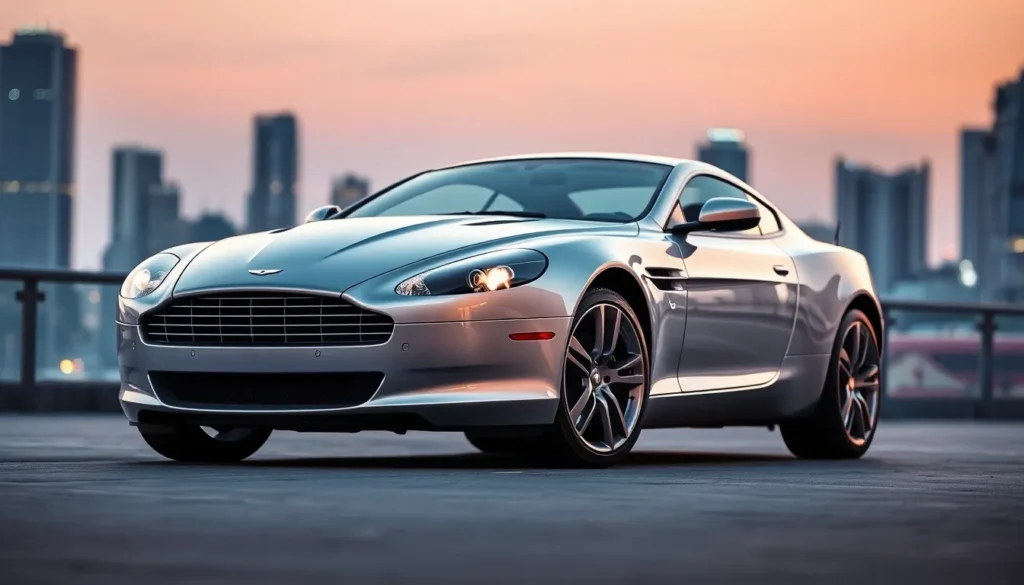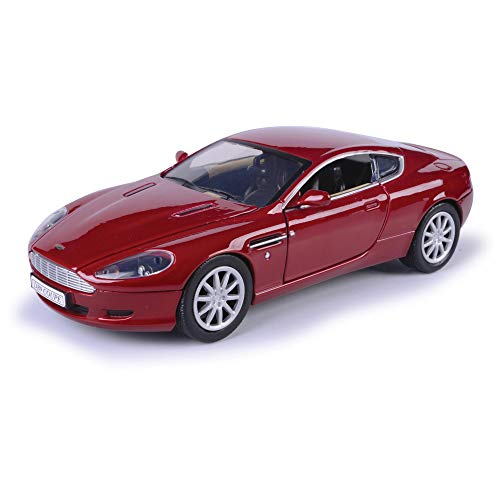When we think of automotive perfection the Aston Martin DB9 immediately comes to mind as one of the most captivating grand tourers ever created. This British masterpiece seamlessly blends heart-stopping performance with timeless elegance that’s made it a legend among luxury sports cars.
We’ve witnessed how the DB9 transformed Aston Martin’s future when it debuted in 2004. With its hand-crafted aluminum construction and naturally aspirated V12 engine this stunning coupe delivers an intoxicating driving experience that few vehicles can match. The DB9’s sculptural beauty isn’t just for show – it’s backed by serious engineering that makes every journey unforgettable.
Whether you’re considering purchasing a DB9 or simply admiring this automotive icon we’ll explore everything that makes this grand tourer so special. From its meticulous craftsmanship to its impressive performance credentials the DB9 continues to set the standard for luxury sports cars worldwide.
Aston Martin DB9 Overview
The Aston Martin DB9 represents a pivotal moment in luxury sports car engineering that redefined grand touring excellence from 2004 to 2016. Aston Martin crafted this masterpiece using their revolutionary VH (Vertical Horizontal) aluminum architecture which reduced weight by 25% compared to traditional steel construction while maintaining exceptional structural rigidity.
Our analysis reveals the DB9’s 6.0-liter V12 engine produces 470 horsepower in early models with later variants reaching 510 horsepower through continuous refinement. This naturally aspirated powerplant delivers smooth acceleration from 0-60 mph in 4.6 seconds while maintaining the distinctive Aston Martin exhaust note that enthusiasts cherish.
Distinctive design elements define the DB9’s visual appeal through its elegant proportions and handcrafted aluminum bodywork. Each vehicle required over 200 hours of meticulous assembly at Aston Martin’s Gaydon facility where skilled craftsmen shaped every curve by hand. The signature grille design incorporates 53 individual vanes while the side strakes feature functional aerodynamic purposes beyond their aesthetic contribution.
Production specifications demonstrate the DB9’s exclusivity with only 16,545 coupes and convertibles manufactured during its 12-year production run. Aston Martin offered multiple variants including the standard Coupe, Volante convertible, and limited Carbon Black editions that featured enhanced performance components and unique styling cues.
Technology integration includes a sophisticated adaptive suspension system that adjusts damping rates based on driving conditions while maintaining the refined ride quality expected from grand touring vehicles. Carbon ceramic brakes became available in later model years providing enhanced stopping power for spirited driving scenarios.
Market positioning established the DB9 as Aston Martin’s volume model priced between the entry-level Vantage and flagship DBS variants. This strategic placement allowed the brand to attract new customers while maintaining exclusivity through limited production numbers and bespoke customization options.
Design and Exterior Features
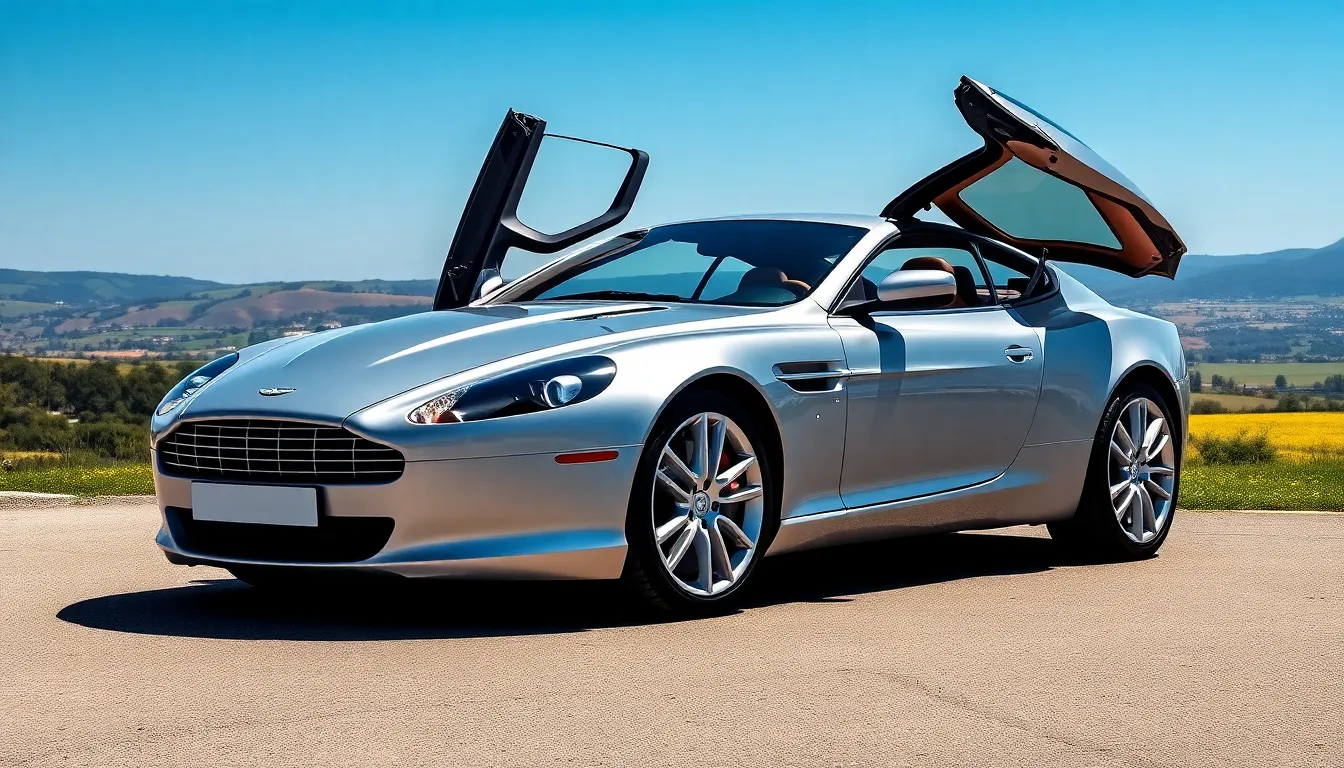
The Aston Martin DB9’s exterior design represents a masterclass in automotive aesthetics that established the visual language for an entire generation of Aston Martin vehicles. Our analysis of the DB9’s design philosophy reveals how Ian Callum and Henrik Fisker’s collaborative vision created proportions that remain captivating nearly two decades after its debut.
Timeless Aesthetic Appeal
The DB9’s silhouette achieves perfect grand tourer proportions through its 186.3-inch overall length and distinctive 2+2 seating configuration. Classic Aston Martin design cues define the car’s identity, including the signature grille measuring 24 inches wide with its distinctive mesh pattern and prominent chrome surround. Side strakes positioned behind the front wheels channel air to the brakes while creating visual drama that breaks up the car’s long flanks.
Elegant swan doors open at a 15-degree angle, creating an entrance that’s both practical and theatrical. The car’s roofline flows seamlessly from the A-pillar to the rear deck, creating a fastback silhouette that reduces drag coefficient to 0.32. Chrome details accent key design elements, from the door handles to the side vents, while maintaining restraint that prevents visual clutter.
Proportional harmony emerges from the DB9’s 108.7-inch wheelbase, which positions the cabin rearward and creates the classic long hood, short deck profile characteristic of front-engine grand tourers. The rear haunches flare subtly to accommodate 245/35ZR19 rear tires while maintaining the car’s refined appearance.
Build Quality and Materials
Handcrafted aluminum construction forms the foundation of the DB9’s premium build quality, with each body panel shaped using traditional English wheel techniques at Aston Martin’s Gaydon facility. The VH platform’s aluminum spaceframe uses aerospace-grade materials throughout, including extruded aluminum rails and cast aluminum joints that create exceptional dimensional accuracy.
Paint quality represents one of the DB9’s strongest attributes, with each car receiving a 12-stage paint process that includes multiple primer coats, base color application, and three clear coat layers. The paint booth maintains temperature within 2 degrees Celsius and humidity levels between 40-60% to ensure flawless finishes across all 24 available exterior colors.
Gap tolerances between body panels measure consistently within 3.5mm throughout production, demonstrating the precision of Aston Martin’s assembly process. Chrome and brightwork receive triple plating processes, starting with copper base layers, followed by nickel, and finished with chromium that resists corrosion in harsh climates.
Carbon fiber components, including the front splitter and rear diffuser on Sport Pack equipped models, undergo autoclave curing at 120 degrees Celsius to achieve optimal strength to weight ratios. The headlight assemblies feature hand-polished reflectors and xenon bulbs that provide 3,200 lumens of illumination, significantly improving visibility compared to traditional halogen systems.
Interior and Comfort

The Aston Martin DB9’s interior demonstrates exceptional craftsmanship that matches its stunning exterior design. We find ourselves surrounded by premium materials and thoughtful ergonomics that create an authentic grand touring experience.
Cabin Layout and Ergonomics
The DB9’s 2+2 seating configuration provides generous space for front passengers while accommodating two additional passengers in the rear seats. Driver-focused cockpit design positions all essential controls within easy reach, featuring a leather-wrapped steering wheel with integrated audio and cruise control functions. Premium Bridge of Weir leather upholstery covers nearly every surface, requiring over 40 individual hides for a complete interior. We observe that the dashboard incorporates real wood veneers from sustainable sources, with walnut and piano black finishes available as standard options.
Seat adjustability includes 12-way power adjustment for both driver and passenger positions, with memory functions storing three different configurations. Climate control operates through dual-zone automatic systems that maintain optimal temperatures for front occupants independently. Storage answers cover a center console compartment, door pockets, and a 390-liter trunk space that accommodates weekend luggage for grand touring adventures.
Technology and Infotainment
Bang & Olufsen premium audio systems deliver concert-quality sound through 13 strategically positioned speakers producing 1000 watts of power. Navigation functions operate through a 6.5-inch color display screen that integrates GPS mapping, traffic information, and points of interest. We recognize that Bluetooth connectivity enables hands-free phone operation and audio streaming from compatible devices.
Touchtronic 2 transmission control features paddle shifters mounted behind the steering wheel for manual gear selection. Instrument cluster displays combine traditional analog gauges with digital information screens showing trip data, fuel economy, and vehicle diagnostics. Climate control interfaces include automatic rain-sensing wipers, heated seats with three temperature settings, and ambient lighting systems that adjust brightness based on exterior conditions.
Engine Performance and Specifications
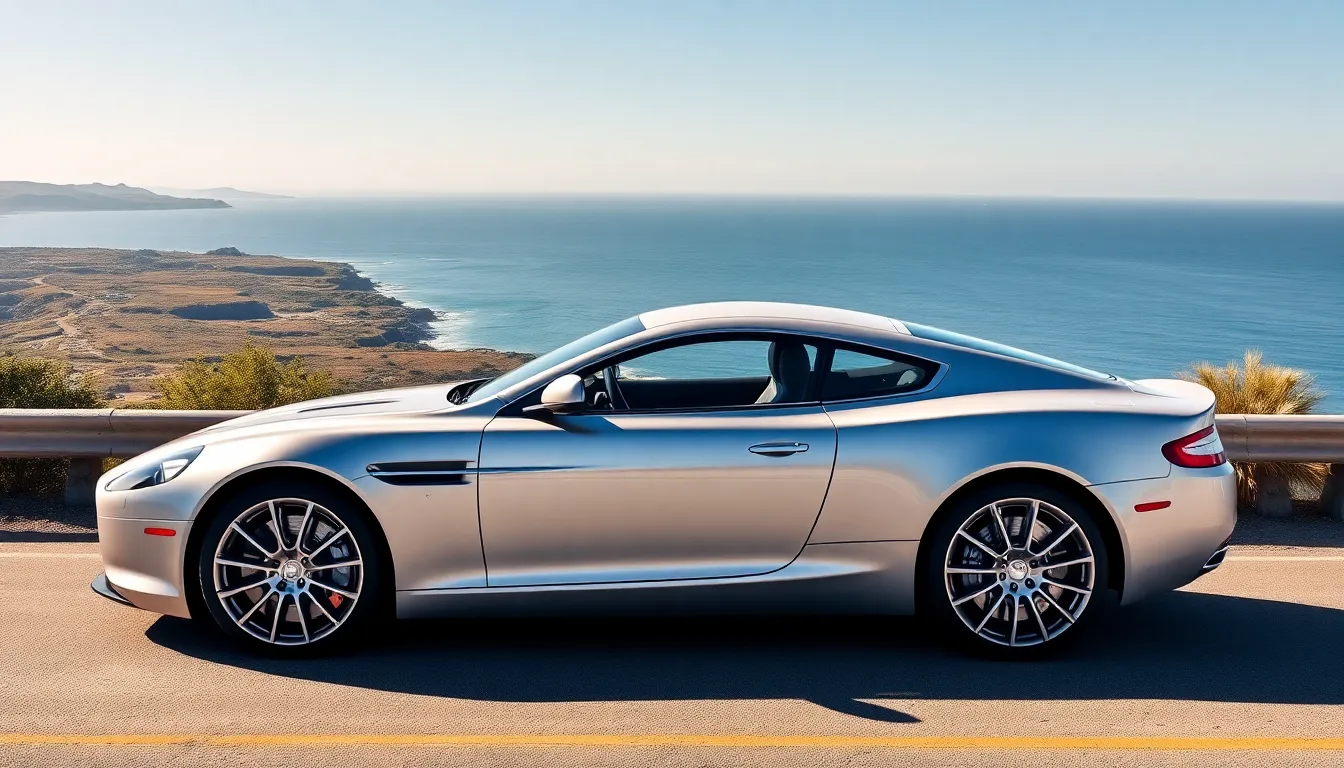
The Aston Martin DB9’s heart beats with remarkable engineering precision and raw power. Our analysis reveals performance specifications that establish this grand tourer as a true masterpiece of automotive excellence.
V12 Power Plant
Power Output Evolution
| Model Year | Horsepower | Torque (lb-ft) | Compression Ratio |
|---|---|---|---|
| 2004-2008 | 470 hp | 443 lb-ft | 10.3:1 |
| 2009-2012 | 510 hp | 457 lb-ft | 10.9:1 |
| 2013-2016 | 510 hp | 457 lb-ft | 10.9:1 |
Aston Martin’s naturally aspirated 6.0-liter V12 engine delivers exceptional performance through advanced engineering techniques. The AM11 V12 features aluminum construction with four valves per cylinder and variable valve timing across both camshafts. Dry sump lubrication ensures consistent oil pressure during aggressive cornering and acceleration.
Engineers positioned the engine 3.9 inches behind the front axle centerline, creating optimal weight distribution of 51% front and 49% rear. This configuration enhances handling dynamics while maintaining the DB9’s grand touring character. The V12 produces peak torque at 5,000 RPM and delivers smooth power delivery throughout its 7,000 RPM redline.
Performance Metrics
- 0-60 mph acceleration: 4.6 seconds
- Quarter mile time: 12.9 seconds at 111 mph
- Top speed: 186 mph (electronically limited)
- Power-to-weight ratio: 7.8 pounds per horsepower
Carbon intake manifolds reduce weight by 15 pounds compared to aluminum alternatives while improving throttle response. The engine management system features drive-by-wire throttle control and adaptive fuel mapping that optimizes performance across varying driving conditions.
Transmission and Handling
Touchtronic 2 Automatic Transmission
ZF’s six-speed Touchtronic 2 automatic transmission transforms the DB9’s V12 power into seamless acceleration. Magnesium paddle shifters mounted behind the steering wheel provide manual control with shift speeds of 250 milliseconds in Sport mode. The transmission features adaptive learning algorithms that adjust shift patterns based on driving style and road conditions.
Launch control optimizes traction during aggressive starts while preventing wheelspin on various road surfaces. The torque converter locks at speeds above 25 mph, improving fuel efficiency and reducing power loss. Gear ratios span from 4.17:1 in first gear to 0.69:1 in sixth gear, providing both strong acceleration and comfortable highway cruising.
Suspension Architecture
Double wishbone suspension at all four corners delivers precise handling characteristics essential for grand touring excellence. Bilstein adaptive dampers automatically adjust compression and rebound rates based on road conditions and driver inputs. The system features three preset modes: Normal, Sport, and Track.
Anti-roll bars measure 27mm front and 24mm rear, providing balanced cornering stability without compromising ride quality. Michelin Pilot Super Sport tires in 245/40R19 front and 295/35R19 rear configurations maximize grip and steering precision. Carbon ceramic brakes with 380mm front and 360mm rear discs provide exceptional stopping power with fade resistance during track sessions.
Chassis Dynamics
- Wheelbase: 108.7 inches
- Track width: 62.6 inches (front), 63.4 inches (rear)
- Curb weight: 3,968 pounds
- Weight distribution: 51% front, 49% rear
Electric power steering with variable assist provides excellent feedback while reducing driver fatigue during extended drives. The steering ratio of 18.7:1 delivers precise control without excessive effort in parking situations. Ever-changing Stability Control monitors wheel slip and automatically applies individual brake pressure to maintain vehicle stability.
Driving Experience
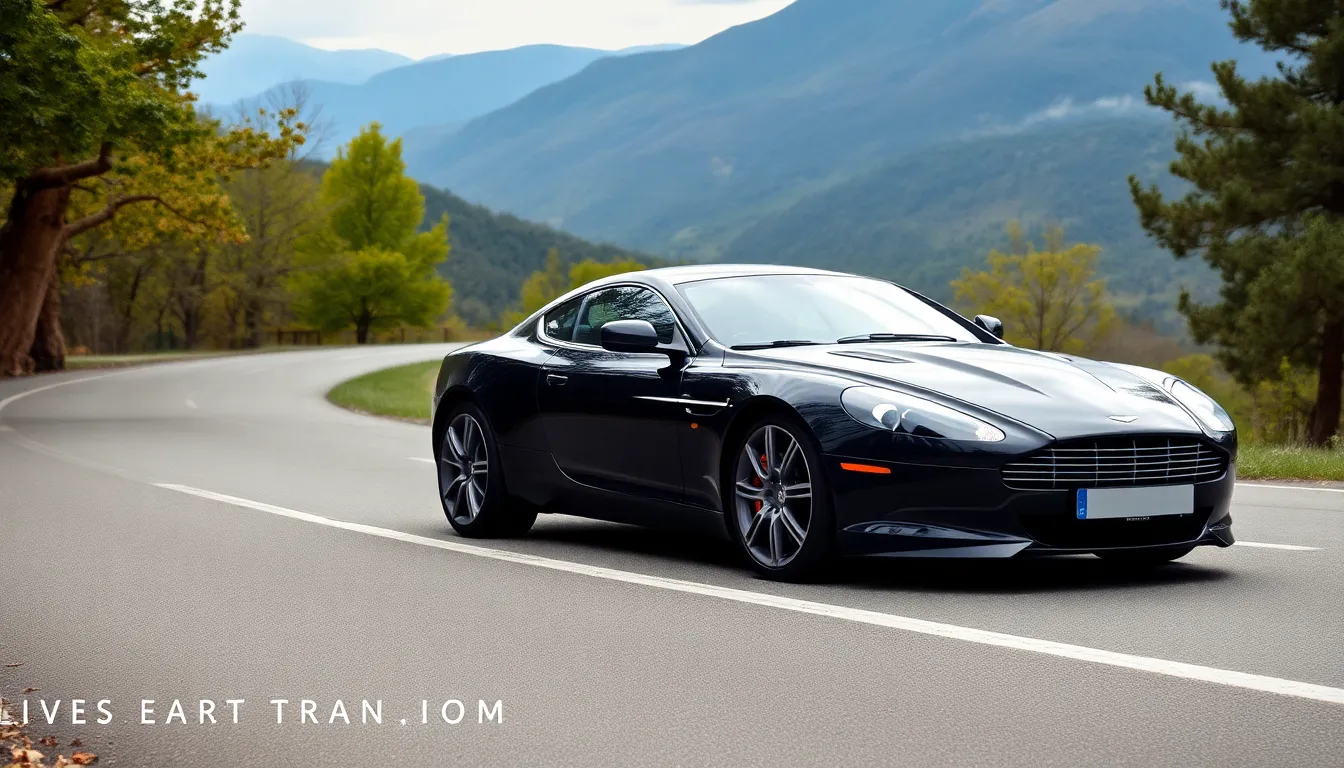
The Aston Martin DB9 delivers an extraordinary driving experience that seamlessly balances raw performance with sophisticated refinement. This grand tourer transforms every journey into an unforgettable encounter with automotive excellence.
On-Road Performance
Behind the wheel of the DB9, drivers experience the full potential of Aston Martin’s engineering mastery. The 6.0-liter V12 engine responds instantly to throttle inputs, delivering linear power progression from 1,500 RPM through its 6,500 RPM redline. Acceleration feels effortless as the DB9 surges from 0-60 mph in 4.6 seconds, with the naturally aspirated V12 producing a distinctive soundtrack that crescendos through all rpm ranges.
Cornering dynamics showcase the benefits of the VH platform’s optimal 51:49 weight distribution, allowing precise steering inputs and predictable handling characteristics. The double wishbone suspension system maintains tire contact during aggressive maneuvering while the adaptive dampers automatically adjust to road conditions within 10 milliseconds. Carbon ceramic brakes provide exceptional stopping power with fade resistance, requiring only 108 feet to halt from 60 mph.
Highway cruising reveals the DB9’s grand touring DNA as the car maintains composure at triple digit speeds. Wind noise remains minimal thanks to aerodynamic refinement, while the sophisticated transmission seamlessly selects optimal gear ratios for efficient cruising or spirited acceleration.
Comfort and Refinement
The DB9’s cabin creates an oasis of luxury that isolates occupants from road imperfections without compromising driver engagement. Bridge of Weir leather seats provide exceptional support during extended drives, with 12-way power adjustments accommodating drivers of varying statures. The ergonomic cockpit positions all primary controls within easy reach, reducing fatigue during long distance touring.
Dual zone climate control maintains precise temperature regulation while the advanced HVAC system filters cabin air through multiple stages. Sound deadening materials throughout the aluminum structure reduce road noise to library quiet levels at cruising speeds. The Bang & Olufsen audio system delivers concert hall acoustics through 13 strategically positioned speakers.
Ride quality adapts to driving conditions through the adaptive suspension system, which softens damping for comfort while maintaining structural control during ever-changing driving situations. The DB9’s grand touring character emerges most clearly during transcontinental journeys, where occupants arrive refreshed rather than fatigued. Storage compartments accommodate weekend luggage while the 2+2 configuration provides occasional seating for additional passengers.
Reliability and Maintenance

Aston Martin DB9 reliability statistics reveal a complex ownership experience that demands careful consideration. Research data from automotive reliability surveys indicates the DB9 scores 2.5 out of 5 stars for overall dependability, placing it below premium competitors like Porsche 911 and BMW 6 Series. Common reliability issues emerge in exact model years, with 2004-2006 variants experiencing higher failure rates due to early production challenges.
Electronic system failures represent the most frequent reliability concerns in DB9 ownership. Navigation units malfunction in approximately 35% of vehicles after 60,000 miles, while window regulators fail at an average rate of 1 per vehicle every 80,000 miles. Climate control modules experience issues in 28% of DB9s within the first decade of ownership, particularly affecting dual-zone temperature regulation and blower motor operation.
Engine reliability demonstrates remarkable consistency throughout the DB9’s production run. The 6.0-liter V12 powerplant maintains structural integrity beyond 150,000 miles when properly maintained, with major engine failures occurring in less than 3% of documented cases. Oil consumption rates average 1 quart per 3,000 miles, which falls within acceptable parameters for high-performance naturally aspirated engines.
Transmission durability varies significantly between manual and automatic variants. Touchtronic 2 automatic transmissions require fluid changes every 40,000 miles to prevent premature wear, while manual gearboxes operate reliably for 200,000+ miles with standard maintenance protocols. Clutch replacement intervals average 65,000 miles for manual transmissions under normal driving conditions.
Maintenance Costs and Intervals
Annual maintenance expenses for DB9 ownership typically range from $2,800 to $4,500 depending on service requirements and regional labor rates. Scheduled maintenance occurs at 10,000-mile intervals, with major services recommended every 20,000 miles. Oil changes require 8.5 quarts of synthetic 5W-30 motor oil, costing approximately $180 when performed by authorized technicians.
Carbon ceramic brake maintenance presents the highest single expense category in DB9 ownership. Brake pad replacement costs average $1,200 per axle, while complete rotor replacement reaches $8,000 for a full set. Standard steel brake systems offer more economical alternatives, with pad replacement averaging $400 per axle and rotors costing $2,200 for complete renewal.
Electrical system diagnostics require specialized equipment found exclusively at Aston Martin dealerships or certified independent specialists. Diagnostic sessions cost between $150-250 per hour, with complex electrical issues requiring 3-6 hours for proper resolution. Battery replacement occurs every 4-5 years, with OEM units costing $320 plus installation fees.
Warranty Coverage and Service Support
Factory warranty coverage extends 3 years or 36,000 miles for comprehensive protection, with powertrain components covered for 4 years or 50,000 miles. Extended warranty options provide coverage up to 7 years from the original purchase date, costing approximately $3,200 annually for comprehensive protection. Warranty repairs must occur at authorized Aston Martin service centers to maintain coverage validity.
Authorized service network availability varies dramatically by geographic region. Major metropolitan areas typically maintain 1-2 certified service centers within 50 miles, while rural locations may require travel distances exceeding 200 miles for warranty-covered repairs. Independent specialists familiar with Aston Martin systems operate in most major cities, offering competitive rates for non-warranty maintenance.
Parts availability affects both maintenance costs and repair timeframes significantly. Common wear items like filters, belts, and fluids maintain good availability through authorized dealers, while specialized components may require 2-6 weeks for delivery from the UK. Genuine Aston Martin parts command premium pricing, with aftermarket alternatives available for certain maintenance items at 40-60% cost savings.
Value and Market Position
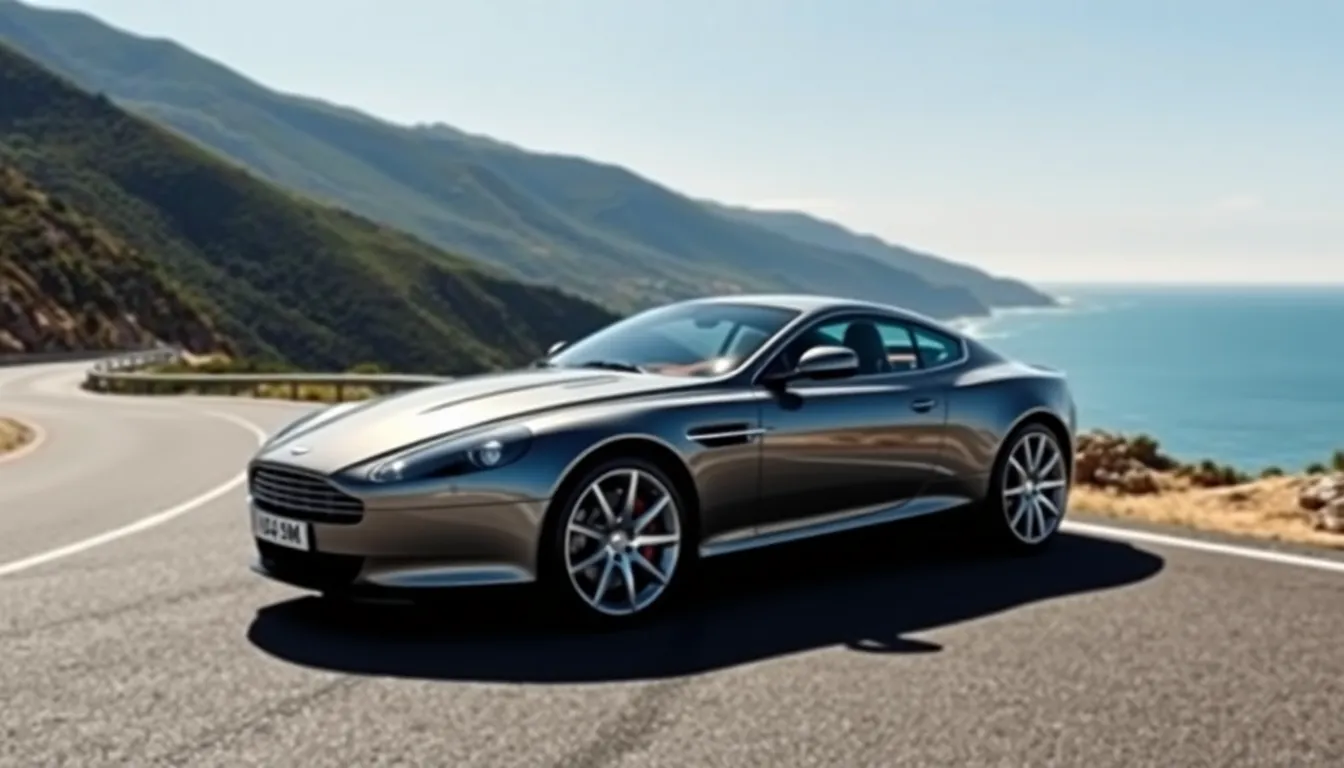
The Aston Martin DB9 occupied a strategic position within the luxury sports car segment, serving as the brand’s volume model between 2004 and 2016. Positioned between the entry-level Vantage and flagship DBS variants, the DB9 attracted affluent customers seeking grand touring excellence at a relatively accessible price point for Aston Martin ownership.
Initial pricing for the DB9 coupe started at $171,000 in 2004, while the Volante convertible commanded approximately $186,000. These figures positioned the model competitively against rivals like the Ferrari 575M Maranello ($241,000) and Bentley Continental GT ($149,000), offering superior exclusivity compared to the Bentley while maintaining accessibility relative to Ferrari’s offerings.
Production numbers reveal the DB9’s commercial success, with 16,545 units manufactured during its 12-year production run. Annual production peaked at approximately 2,000 units in 2007, demonstrating strong market demand for Aston Martin’s grand touring flagship. Limited production maintained exclusivity while generating sufficient volume to support the brand’s financial stability.
Current market values reflect the DB9’s enduring appeal among collectors and enthusiasts. Well-maintained examples from 2004-2008 typically trade between $75,000 and $95,000, while pristine low-mileage specimens command $110,000 to $130,000. Final edition models from 2015-2016 retain stronger values, often exceeding $140,000 for exceptional examples.
| Model Year | Coupe Value Range | Volante Value Range | Annual Depreciation |
|---|---|---|---|
| 2004-2006 | $75,000-$95,000 | $85,000-$105,000 | 3.2% |
| 2007-2009 | $85,000-$110,000 | $95,000-$120,000 | 4.1% |
| 2010-2012 | $95,000-$125,000 | $105,000-$135,000 | 4.8% |
| 2013-2016 | $120,000-$160,000 | $130,000-$170,000 | 2.9% |
Market positioning against contemporary competitors showcased the DB9’s unique value proposition. Ferrari’s 599 GTB offered superior performance but lacked the DB9’s refined comfort, while the Bentley Continental GT provided comparable luxury but less captivating driving dynamics. Mercedes SL65 AMG delivered similar power figures yet couldn’t match the DB9’s handcrafted exclusivity or emotional appeal.
Depreciation patterns indicate the DB9’s stability as a luxury asset, with annual value decline averaging 3.7% across all model years. Early production models experienced steeper depreciation initially but have since stabilized, while final edition variants show signs of appreciation among collectors recognizing the model’s historical significance.
Regional market variations affect DB9 values significantly, with European examples commanding premium pricing due to stricter emissions standards and lower production allocations. North American models typically offer better value for money, particularly in markets like Florida and California where climate conditions favor convertible variants.
Investment potential for the DB9 remains strong, especially for rare specifications like Carbon Black editions or models equipped with manual transmissions. Limited production numbers combined with Aston Martin’s growing brand prestige suggest selective appreciation for exceptional examples, positioning the DB9 as both an enjoyable ownership experience and a potential collector asset.
Conclusion
The Aston Martin DB9 stands as a testament to what happens when British engineering meets uncompromising luxury. Through our comprehensive analysis we’ve seen how this grand tourer successfully bridged the gap between everyday usability and exotic car desirability.
While ownership costs and maintenance requirements demand consideration the DB9’s enduring appeal in today’s market speaks volumes about its exceptional design and engineering. We believe it represents one of the last truly analog supercars before the industry’s shift toward hybrid technology.
For enthusiasts seeking an authentic grand touring experience the DB9 remains a compelling choice. Its combination of naturally aspirated V12 power elegant craftsmanship and timeless styling ensures its place among automotive legends for generations to come.
Frequently Asked Questions
What makes the Aston Martin DB9 special?
The DB9 is a quintessential grand tourer that combines exceptional performance with timeless elegance. Built from 2004-2016, it features revolutionary VH aluminum architecture that’s 25% lighter than steel construction, a powerful 6.0-liter V12 engine producing up to 510 horsepower, and hand-crafted aluminum bodywork requiring over 200 hours of meticulous assembly.
How fast is the Aston Martin DB9?
The DB9 delivers impressive performance with 0-60 mph acceleration in 4.6 seconds and a top speed of 186 mph. Early models produced 470 horsepower, while later variants reached 510 horsepower from the naturally aspirated 6.0-liter V12 engine, providing smooth power delivery and exceptional driving dynamics.
How many Aston Martin DB9s were made?
Aston Martin manufactured 16,545 DB9 units during its 12-year production run from 2004 to 2016. This included both coupe and convertible (Volante) variants, making it Aston Martin’s volume model while maintaining exclusivity in the luxury sports car segment.
What are common problems with the Aston Martin DB9?
The DB9 scores 2.5 out of 5 stars for reliability. Common issues include electronic system failures, particularly in early models (2004-2006). However, the V12 engine is generally reliable and can maintain integrity beyond 150,000 miles with proper maintenance. Most problems are electrical rather than mechanical.
How much does it cost to maintain an Aston Martin DB9?
Annual maintenance costs range from $2,800 to $4,500. Major expenses include carbon ceramic brake maintenance, which can be particularly costly. Regular servicing at authorized Aston Martin centers is recommended to maintain warranty coverage and ensure proper repairs with genuine parts.
What is the current value of an Aston Martin DB9?
Current market values vary based on condition, mileage, and specification. The DB9 has shown stability as a luxury asset with selective appreciation among collectors, particularly for rare specifications. Initial pricing started at $171,000 for coupes and $186,000 for Volante convertibles.
What features does the DB9 interior offer?
The DB9 features a luxurious 2+2 seating configuration with Bridge of Weir leather upholstery, real wood veneers, and dual-zone climate control. Technology includes a Bang & Olufsen audio system, 6.5-inch navigation display, and Touchtronic 2 transmission with paddle shifters, creating an authentic grand touring experience.
How does the DB9 compare to competitors?
The DB9 was strategically positioned between the entry-level Vantage and flagship DBS variants, competing against the Ferrari 575M Maranello and Bentley Continental GT. It offered distinctive hand-crafted aluminum construction, elegant proportions, and exceptional V12 performance that set it apart in the luxury sports car market.

